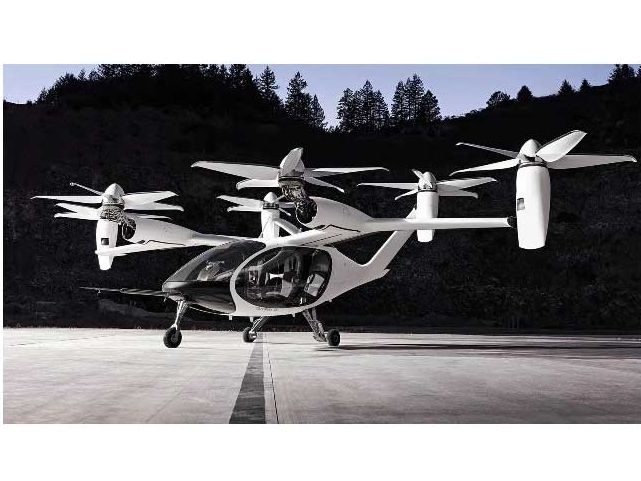Categories more
- Adventures (17)
- Arts / Collectables (15)
- Automotive (37)
- Aviation (11)
- Bath, Body, & Health (77)
- Children (6)
- Cigars / Spirits (32)
- Cuisine (16)
- Design/Architecture (22)
- Electronics (13)
- Entertainment (4)
- Event Planning (5)
- Fashion (46)
- Finance (9)
- Gifts / Misc (6)
- Home Decor (45)
- Jewelry (41)
- Pets (3)
- Philanthropy (1)
- Real Estate (16)
- Services (23)
- Sports / Golf (14)
- Vacation / Travel (60)
- Watches / Pens (15)
- Wines / Vines (24)
- Yachting / Boating (17)
Published
01/07/2021 by MetawaveMetawave Corporation has been awarded a prime, Phase One contract by the United States Air Force (USAF) to provide a high-precision, all-weather sensing solution for electric Vertical Take-Off and Landing (eVTOL) aircraft. The initial Metawave study outlined by the contract will identify modifications needed for the company's existing "SPEKTRA" radar for aerial operations, all of which will be applied to development of next-generation eVTOL air-vehicles.
The USAF's AGILITY PRIME initiative seeks to advance the development of applicable technologies for operational, human-rated eVTOL aircraft by 2023. In addition to traditional aerospace companies, the Air Force is directly engaging with innovative new sector entrants, such as Metawave, that have demonstrated their ability to provide "enabling technologies" that will advance the requirements of AGILITY PRIME.
Metawave's SPEKTRA is a compact analog antenna system that has provided the automotive industry with high-precision radar capabilities accurate out to 330 meters. The current long-range high-resolution SPEKTRA analog radar design enables critical features for next-generation cars, including adaptive cruise control, lane change assist, and automated emergency braking. Based on the level of precision required to safely deliver these features in all-weather conditions, SPEKTRA is an excellent candidate for a rugged sensor system for future eVTOL aircraft, and will enable precision eVTOL navigation and obstacle avoidance.
As part of this Phase One effort, Metawave, in partnership with the Arizona State University Center for Wireless Information Systems and Computational Architectures, will modify the SPEKTRA radar for longer ranges and navigation in three-dimensional (3D) space.
Maha Achour, CEO and founder of Metawave, said the requirements of the aerospace application are a natural extension of SPEKTRA's current capabilities extending high-resolution imaging radars to Ariel Vehicles.
"Both the automotive and eVTOL markets require the highest level of precision delivered by SPEKTRA," Achour said. "For both applications, the ability to reliably distinguish between several objects close together in all weather and light conditions is an important capability for all phases of transport, including flight. The most significant difference is the operational range of the radar."
The AGILITY PRIME initiative was launched by AFWERX, the new rapid innovation branch of the Air Force. AFWERX is devoted to quickly fielding emerging commercial technologies for a variety of future-facing applications. AFWERX's eVTOL project is its biggest program to date, awarding $38M thus far to more than 250 selected proposals for aircraft and flight-enabling technologies.
The Washington, DC-based start-up company Rhea Space Activity (RSA) worked with Metawave to develop the SPEKTRA concept as a parallel application for its well-established commercial automotive uses. RSA identified SPEKTRA's two-dimensional (2D) solid-state beamsteering and all-weather operational capabilities as uniquely suited to solve several problems related to providing eVTOL aircraft with reliable situational awareness.
With SPEKTRA nearing commercial operation, RSA suggested AGILITY PRIME as a good fit for further development of the radar system's capabilities.
Shawn Usman, astrophysicist and Founder of RSA, said that adaptation of driverless car technologies could be used for a variety of national security applications.
"Rapid technological innovation in the U.S. driverless car sector is also demonstrating remarkable compatibility with the high-performance requirements of many Department of Defense missions," Usman said. "SPEKTRA in particular is versatile enough to support unmanned VTOL operations as well as fixed-wing flight. By guiding small yet highly innovative companies like Metawave through the complexities of programs such as AFWERX, RSA plays a crucial cooperative role in developing core technologies, like SPEKTRA, to push the boundaries of current consumer-facing innovations, while helping to solve critical national security issues."
Following the completion of Phase One, Metawave will apply for a Phase Two contract to bring operational radar hardware to USAF personnel. The Phase Two effort will include a series of field tests of the proposed design array under a variety of varied situations and environments.
SPEKTRA's high angular resolution enables it to distinguish between objects right next to each other (such as a car and a biker). Its narrow beams in the analog domain enable it to quickly detect objects in the vehicle's field of view (FoV) with very high accuracy, while avoiding interference. SPEKTRA's focused beams and small cross-sections allow it to detect objects, such as pedestrians and road hazards, at long ranges and in all weather conditions. The narrow beam and high angular precision of the system also allow SPEKTRA to track cross-traffic, a difficult problem for traditional radar.















